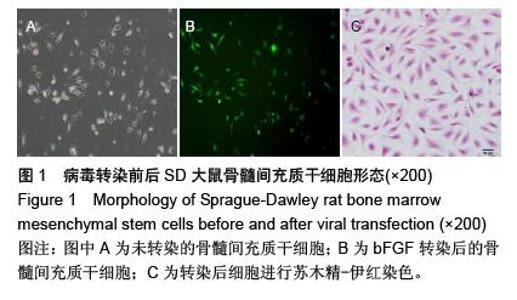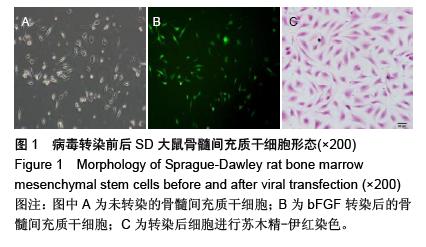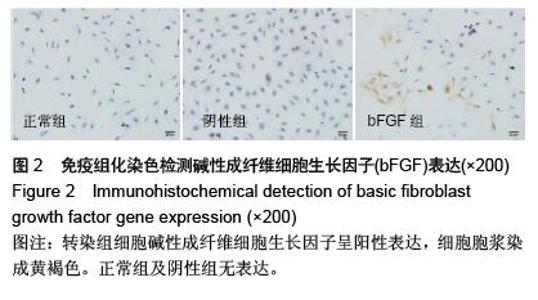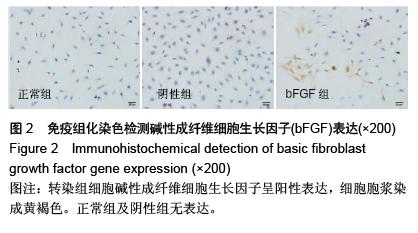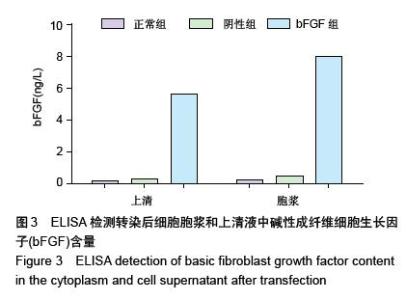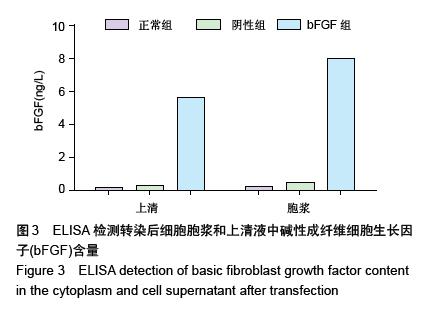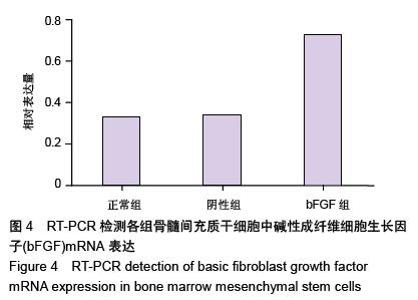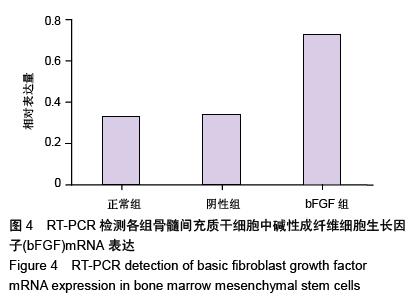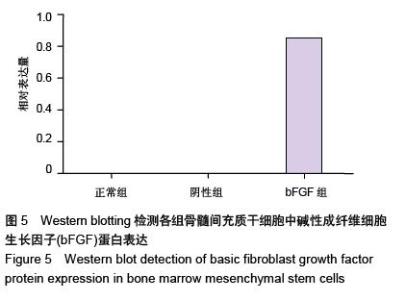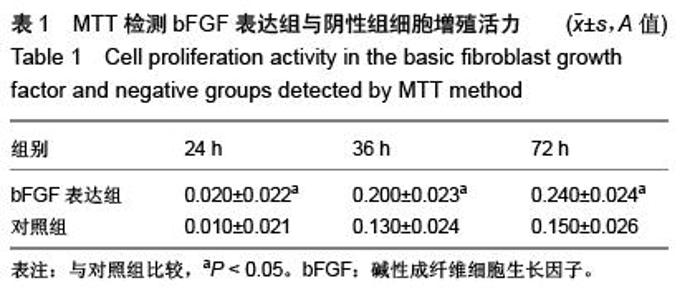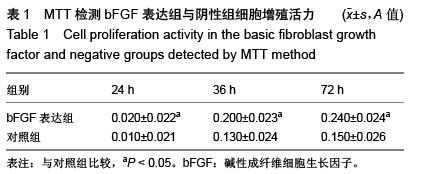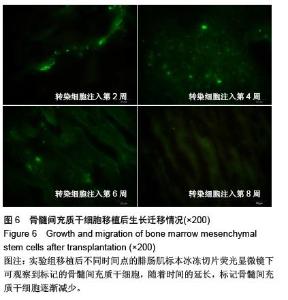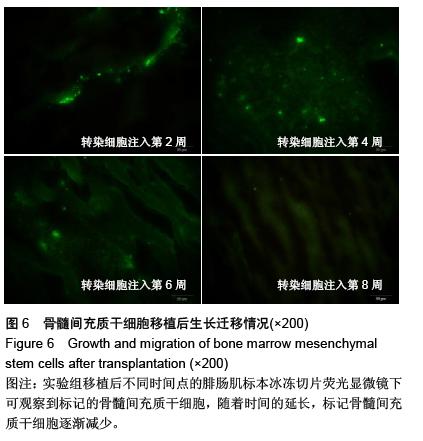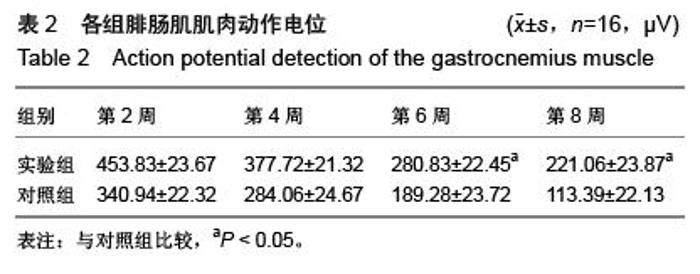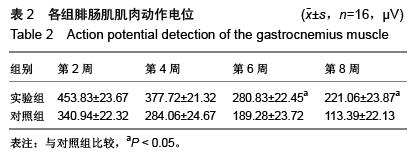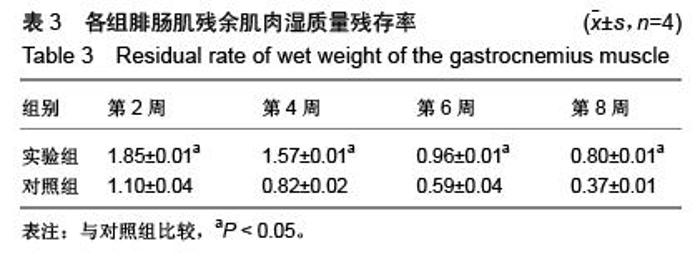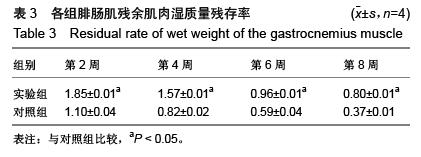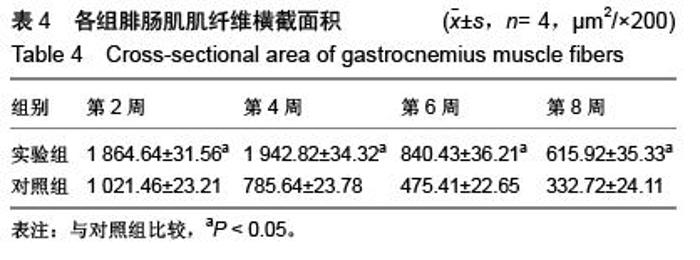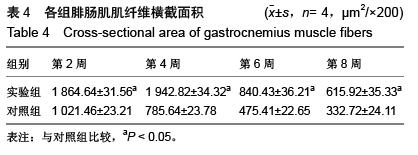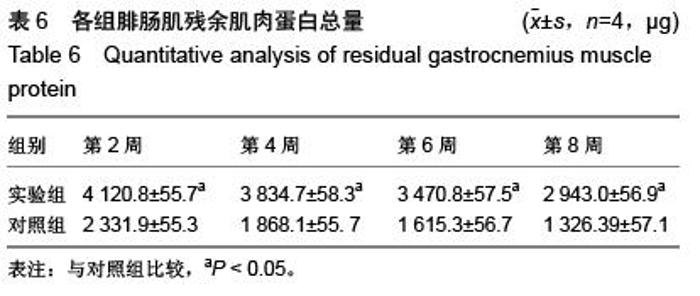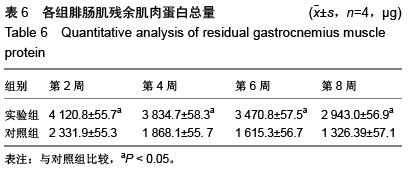Chinese Journal of Tissue Engineering Research ›› 2016, Vol. 20 ›› Issue (1): 89-94.doi: 10.3969/j.issn.2095-4344.2016.01.016
Previous Articles Next Articles
Application of basic fibroblast growth factor gene-transfected bone marrow mesenchymal stem cells in denervated muscle atrophy
Yu Ning1, Wang Yan-sheng1, Qi Chang-ping2
- 1Fifth Department of Hand Surgery, 2Second Department of Hand Surgery, Central Hospital of Shenyang Medical University, Shenyang 110024, Liaoning Province, China
-
Received:2015-11-15Online:2016-01-01Published:2016-01-01 -
Contact:Wang Yan-sheng, Master, Chief physician, Fifth Department of Hand Surgery, Central Hospital of Shenyang Medical University, Shenyang 110024, Liaoning Province, China -
About author:Yu Ning, Master, Attending physician, Fifth Department of Hand Surgery, Central Hospital of Shenyang Medical University, Shenyang 110024, Liaoning Province, China -
Supported by:the Scientific Plan Project of Liaoning Province, No. 2012225019
CLC Number:
Cite this article
Yu Ning, Wang Yan-sheng, Qi Chang-ping. Application of basic fibroblast growth factor gene-transfected bone marrow mesenchymal stem cells in denervated muscle atrophy[J]. Chinese Journal of Tissue Engineering Research, 2016, 20(1): 89-94.
share this article
| [1] 赵志英,胡海涛,冯改丰,等.人脑源性神经营养因子基因修饰神经干细胞移植对痴呆大鼠学习记忆的改善[J].中国修复重建外科杂志,2005,19(5):331-334.
[2] 王岩峰,吕刚,李雷,等.神经干细胞移植对大鼠脊髓损伤后胶质细胞源性神经营养因子与生长相关蛋白43基因表达的影响[J].中国修复重建外科杂志,2005,19(6):416-419.
[3] Zhu J, Zhou L, XingWu F.Tracking neural stem cells in patients with brain trauma. N Engl J Med. 2006;355(22): 2376-2378.
[4] Martin A, David V, Vico L, et al. Impaired energetic metabolism after central leptin signaling leads to massive appendicular bone loss in hindlimb-suspended rats. J Bone Miner Res. 2008;23(12):2040-2047.
[5] Widrick JJ, Maddalozzo GF, Hu H, et al. Detrimental effects of reloading recovery on force, shortening velocity, and power of soleus muscles from hindlimb-unloaded rats. Am J Physiol Regul Integr Comp Physiol. 2008;295(5):R1585-1592.
[6] Tsutsumi S, Shimazu A, Miyazaki K, et al. Retention of multilineage differentiation potential of mesenchymal cells during proliferation in response to FGF. Biochem Biophys Res Commun. 2001;288(2):413-419.
[7] Sotiropoulou PA, Perez SA, Salagianni M, et al. Characterization of the optimal culture conditions for clinical scale production of human mesenchymal stem cells.Stem Cells. 2006;24(2):462-471.
[8] Li ZY, Liu L, Tian WD, et al. A study on transfecting green fluorescent protein gene to rat bone marrow mesenchymal stem cells. Zhonghua Kou Qiang Yi Xue Za Zhi. 2005;40(2): 150-153.
[9] McMahon JM, Conroy S, Lyons M, et al. Gene transfer into rat mesenchymal stem cells: a comparative study of viral and nonviral vectors. Stem Cells Dev. 2006;15(1):87-96.
[10] Lanzetta M, Gal A, Wright B, et al. Effect of FK506 and basic fibroblast growth factor on nerve regeneration using a polytetrafluoroethylene chamber for nerve repair. Int Surg. 2003;88(1):47-51.
[11] Yanada S, Ochi M, Kojima K, et al. Possibility of selection of chondrogenic progenitor cells by telomere length in FGF-2-expanded mesenchymal stromal cells. Cell Prolif. 2006;39(6):575-584.
[12] 吴维,胡何节,邓福生,等.血管内皮细胞生长因子和碱性成纤维细胞生长因子体外联合诱导外周血单个核细胞定向分化为血管内皮细胞[J].中国组织工程研究与临床康复,2007,11(11):2094-2097.
[13] Cockrell AS, Kafri T. Gene delivery by lentivirus vectors. Mol Biotechnol. 2007;36(3):184-204.
[14] Xu H, Zhu Y, Xin C. An experimental study on effect of implanting bFGF into denervated skeletal muscle to muscle satellite cell proliferation and muscle atrophy. Zhongguo Xiu Fu Chong Jian Wai Ke Za Zhi. 2008;22(12):1462-1465.
[15] Jiang J, Yao P, Gu Y, et al. Adult rat mesenchymal stem cells delay denervated muscle atrophy. Cell Mol Neurobiol. 2012; 32(8):1287-1298. |
| [1] | Jiang Tao, Ma Lei, Li Zhiqiang, Shou Xi, Duan Mingjun, Wu Shuo, Ma Chuang, Wei Qin. Platelet-derived growth factor BB induces bone marrow mesenchymal stem cells to differentiate into vascular endothelial cells [J]. Chinese Journal of Tissue Engineering Research, 2021, 25(25): 3937-3942. |
| [2] | Chen Yang, Huang Denggao, Gao Yuanhui, Wang Shunlan, Cao Hui, Zheng Linlin, He Haowei, Luo Siqin, Xiao Jingchuan, Zhang Yingai, Zhang Shufang. Low-intensity pulsed ultrasound promotes the proliferation and adhesion of human adipose-derived mesenchymal stem cells [J]. Chinese Journal of Tissue Engineering Research, 2021, 25(25): 3949-3955. |
| [3] | Zhang Lishu, Liu Anqi, He Xiaoning, Jin Yan, Li Bei, Jin Fang. Alpl gene affects the therapeutic effect of bone marrow mesenchymal stem cells on ulcerative colitis [J]. Chinese Journal of Tissue Engineering Research, 2021, 25(25): 3970-3975. |
| [4] | Ruan Guangping, Yao Xiang, Liu-Gao Miyang, Cai Xuemin, Li Zian, Pang Rongqing, Wang Jinxiang, Pan Xinghua. Umbilical cord mesenchymal stem cell transplantation for traumatic systemic inflammatory response syndrome in tree shrews [J]. Chinese Journal of Tissue Engineering Research, 2021, 25(25): 3994-4000. |
| [5] | Mo Jianling, He Shaoru, Feng Bowen, Jian Minqiao, Zhang Xiaohui, Liu Caisheng, Liang Yijing, Liu Yumei, Chen Liang, Zhou Haiyu, Liu Yanhui. Forming prevascularized cell sheets and the expression of angiogenesis-related factors [J]. Chinese Journal of Tissue Engineering Research, 2021, 25(22): 3479-3486. |
| [6] | Chen Lei, Zheng Rui, Jie Yongsheng, Qi Hui, Sun Lei, Shu Xiong. In vitro evaluation of adipose-derived stromal vascular fraction combined with osteochondral integrated scaffold [J]. Chinese Journal of Tissue Engineering Research, 2021, 25(22): 3487-3492. |
| [7] | Wei Qin, Zhang Xue, Ma Lei, Li Zhiqiang, Shou Xi, Duan Mingjun, Wu Shuo, Jia Qiyu, Ma Chuang. Platelet-derived growth factor-BB induces the differentiation of rat bone marrow mesenchymal stem cells into osteoblasts [J]. Chinese Journal of Tissue Engineering Research, 2021, 25(19): 2953-2957. |
| [8] | Chen Xiao, Guo Zhi, Chen Lina, Liu Xuanyong, Zhang Yihuizhi, Li Xumian, Wang Yueqiao, Wei Liya, Xie Jing, Lin Li. Factors affecting the mobilization and collection of autologous peripheral blood hematopoietic stem cells [J]. Chinese Journal of Tissue Engineering Research, 2021, 25(19): 2958-2962. |
| [9] | Guo Zhibin, Wu Chunfang, Liu Zihong, Zhang Yuying, Chi Bojing, Wang Bao, Ma Chao, Zhang Guobin, Tian Faming. Simvastatin stimulates osteogenic differentiation of bone marrow mesenchymal stem cells [J]. Chinese Journal of Tissue Engineering Research, 2021, 25(19): 2963-2968. |
| [10] | Li Congcong, Yao Nan, Huang Dane, Song Min, Peng Sha, Li Anan, Lu Chao, Liu Wengang. Identification and chondrogenic differentiation of human infrapatellar fat pad derived stem cells [J]. Chinese Journal of Tissue Engineering Research, 2021, 25(19): 2976-2981. |
| [11] | Gao Yuanhui, Xiang Yang, Cao Hui, Wang Shunlan, Zheng Linlin, He Haowei, Zhang Yingai, Zhang Shufang, Huang Denggao. Comparison of biological characteristics of adipose derived mesenchymal stem cells in Wuzhishan inbreed miniature pigs aged two different months [J]. Chinese Journal of Tissue Engineering Research, 2021, 25(19): 2988-2993. |
| [12] | Cao Yang, Zhang Junping, Peng Li, Ding Yi, Li Guanghui. Isolation and culture of rabbit aortic endothelial cells and biological characteristics [J]. Chinese Journal of Tissue Engineering Research, 2021, 25(19): 3000-3003. |
| [13] | Dai Min, Wang Shuai, Zhang Nini, Huang Guilin, Yu Limei, Hu Xiaohua, Yi Jie, Yao Li, Zhang Ligang. Biological characteristics of hypoxic preconditioned human amniotic mesenchymal stem cells [J]. Chinese Journal of Tissue Engineering Research, 2021, 25(19): 3004-3008. |
| [14] | Qin Yanchun, Rong Zhen, Jiang Ruiyuan, Fu Bin, Hong Xiaohua, Mo Chunmei. Chinese medicine compound preparation inhibits proliferation of CD133+ liver cancer stem cells and the expression of stemness transcription factors [J]. Chinese Journal of Tissue Engineering Research, 2021, 25(19): 3016-3023. |
| [15] | Dai Yaling, Chen Lewen, He Xiaojun, Lin Huawei, Jia Weiwei, Chen Lidian, Tao Jing, Liu Weilin. Construction of miR-146b overexpression lentiviral vector and the effect on the proliferation of hippocampal neural stem cells [J]. Chinese Journal of Tissue Engineering Research, 2021, 25(19): 3024-3030. |
| Viewed | ||||||
|
Full text |
|
|||||
|
Abstract |
|
|||||
